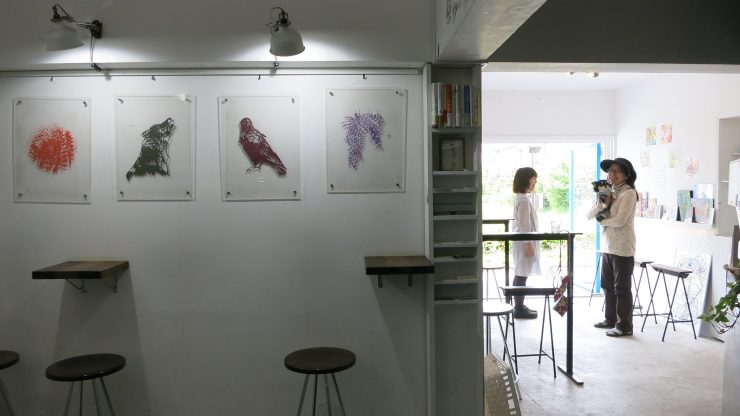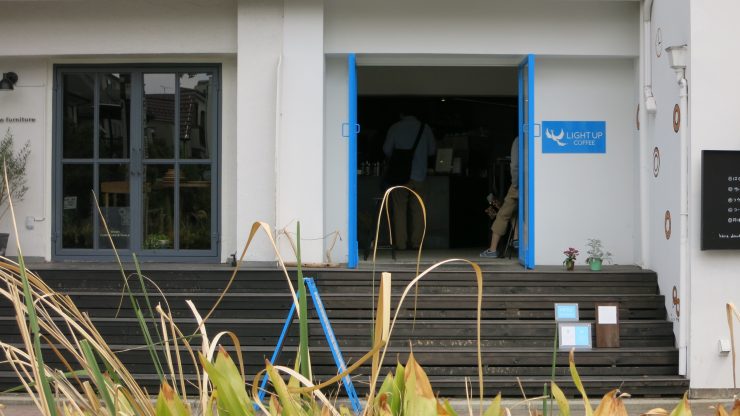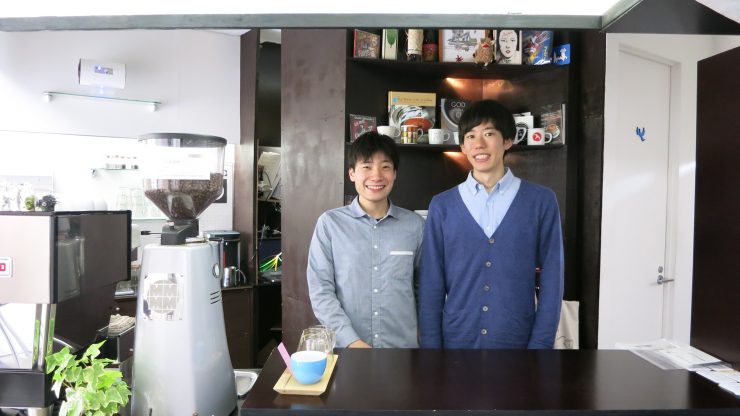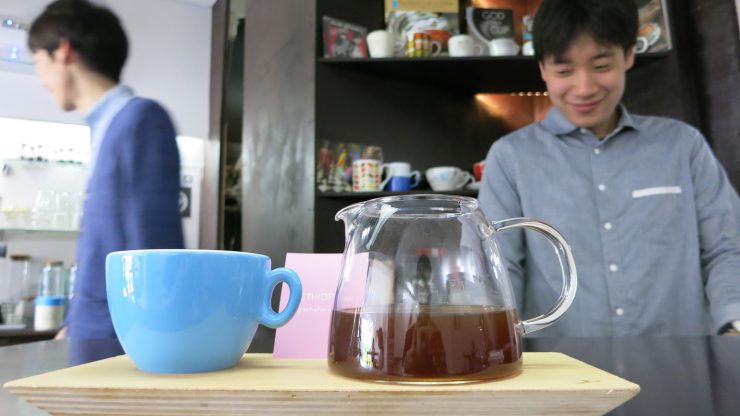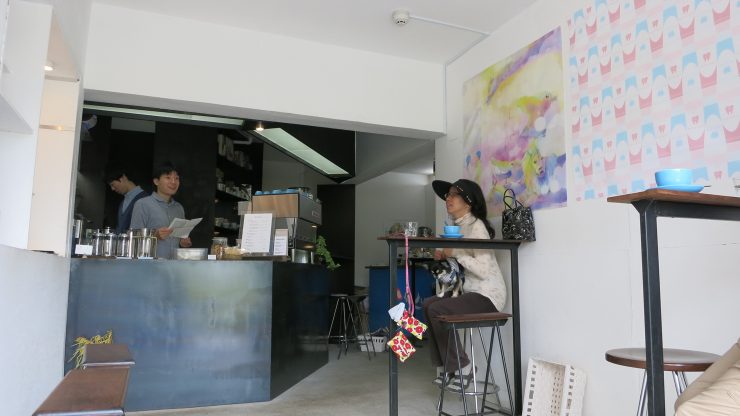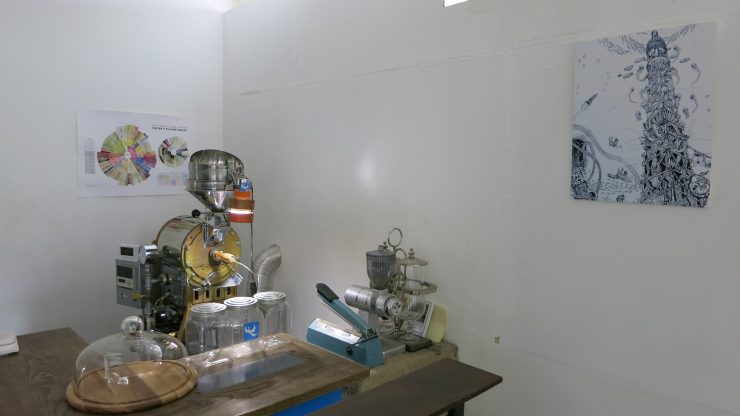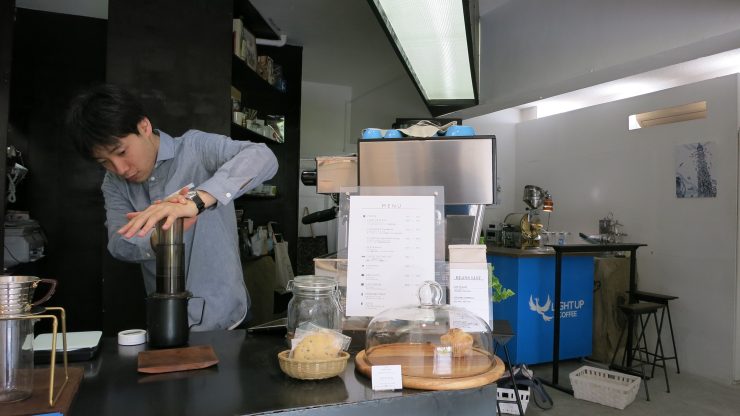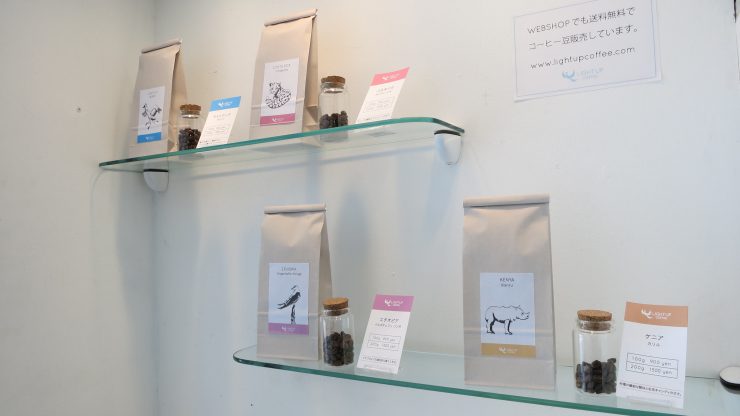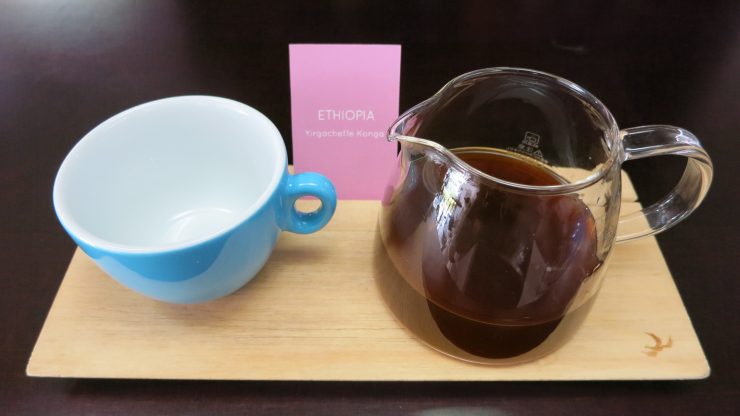As I hung out at Light Up Coffee, I found myself thinking about the Japanese word hyogen, meaning “expression”. A city is, after all, an expression of its inhabitants—through the smaller towns and suburbs that fill its borders, and the shops, homes, and people that make up its communities. These expressions are like paint: they give a city color, personality, and individuality.
So I wondered: What does Light Up Coffee say about Kichijoji? What does this little coffee shop at the end of the Nakamichi shopping arcade express in its roasting, brewing, and interactions with the locals?
On the surface, it’s perhaps a simple expression of creativity and passion. To hear owners Yuma Kawano and Tamito Aihara tell it, the shop space was a mess to start—the best they could find on their budget, it was broken down, dusty, and filled with insects. The two were university students at the time—a time when money was something of a far-off, dream-like concept—and they put the space together with their own hands. They built the tables and chairs. They built the counter and shelving. They painted the walls white, the doors blue, and the counters black.
I asked what they studied at university. Kawano says economics; Aihara, design. I mention how far the two fields seem from coffee. The two share a moment of shrugging shoulders and sheepish laughs.
They met through latte art, they say. Working part-time at chain cafes, Kawano and Aihara got lost in the swirls and symmetry of espresso and steamed milk. Neither of them liked coffee then. But as they tasted their way around the local scene, they noticed variations in flavor and started drinking coffee straight, finding themselves surprised at the juicy, fruity cups they tasted at places like Fuglen and Onibus. After exhausting the Tokyo scene, they toured Europe—sipping, cupping, and tasting their way through Norway and London. Hungry to share what they’d learned, they opened Light Up Coffee in July of 2014.
Says Kawano, “There’s a lot of potential here [in Tokyo]. But we saw a gap between us and the rest of the world. We want to help close that, and share specialty coffee with more people; teach them it’s not just a bitter drink—it has a variety of flavors, influenced by where it comes from, how it’s processed, how it’s roasted, brewed, and extracted.”
In this way, Light Up Coffee is a neat pocket-expression of the evolving youth culture in Kichijoji—where the narrower streets bustle with smaller independent shops, and the main roads house big-name shopping centers and brand-name outlets. It’s a complementary blend of chic and unique that draws young people hungry for new trends, new ideas, and new outlooks.
“Lots of new culture is taking root here,” says Kawano. “People are open to new ideas and experiences. That’s the reason we chose this location. There isn’t much of a specialty coffee influence, so we can provide that.”
It’s a hopeful and positive outlook. “People are changing,” Kawano tells me. “Young people are starting to understand specialty coffee, and they enjoy discovering it because it’s popular. This is how coffee culture will change. We’re not just a food and drink establishment—we’re dedicated to changing culture, too.”
There’s youthful ambition in the words—Kawano is only 24, and Aihara 23—that feels fearless and confident. I wondered how experience played into the roasting side of things.
Kawano tells me he bought his Fuji roaster at 21. He didn’t have any experience, but he did drink a wide range of coffee. And this, he says, was key. “I wanted to avoid learning from others as much as I could. I didn’t want to be influenced by traditional methods or styles. I took what we’d learned through conversations with baristas in London and Scandinavia, and I came to understand good coffee—that balance of sweetness, acidity, and clean terroir. That coffee became our goal.”
“Trial and error,” he says. “Experimentation. Revision. Data gathering. Gradual improvements.” I ask how the first year was; the year that was essentially blind. “I went through so much coffee,” he says, shaking his head. “So much coffee.”
But roasting batches in the one-kilogram roaster, Kawano quickly came to understand the process. “I’ve come to get a really deep understanding for slight differences. We cup everything, so we get a real sense for what’s different, and why. We can really delve into discovering tastes. With a bigger roaster, perhaps we wouldn’t get this kind of constant feedback.”
And if coffee is indeed an expression of culture, then perhaps it’s only fitting that the flavors and styles evolve with the changing of generations. Though the kissaten is an expression in its own way, it perhaps fails to capture the energy of modern Japanese youth.
But then again, perhaps I was overthinking the whole thing. As I sipped at my AeroPress and watched the customers come, chat, drink, and go, I realized that coffee is an expression of happiness—of appreciating a moment of respite and warmth, as delivered in a simple cup.
As he wipes down the counter and the espresso machine, Aihara says, “Coffee is something that enriches life, I think. I didn’t really care much for taste before I discovered coffee. Starting out in design, creative work was what interested me—I was indifferent. But since finding coffee, my horizons have broadened. I can appreciate taste. This is important for anyone, in any lifestyle, and coffee can be a gateway to that understanding. It’s what I want our coffee to be.”
Creativity, passion, culture, youth, quality, enrichment—the diversity of expression in the roasting, brewing, and drinking of coffee is perhaps at the heart of it. Like the variety of people and personalities that make up a city or community, there is not one single thing that makes Light Up Coffee an interesting peek into Kichijoji culture; it is a culmination.
Light Up Coffee is located at 4 Chome-13-15 Kichijoji, Tokyo.
Hengtee Lim is a Sprudge.com staff writer based in Tokyo. Read more Hengtee Lim on Sprudge.
The post The Daring Young Duo Behind Light Up Coffee In Kichijoji, Tokyo appeared first on Sprudge.


